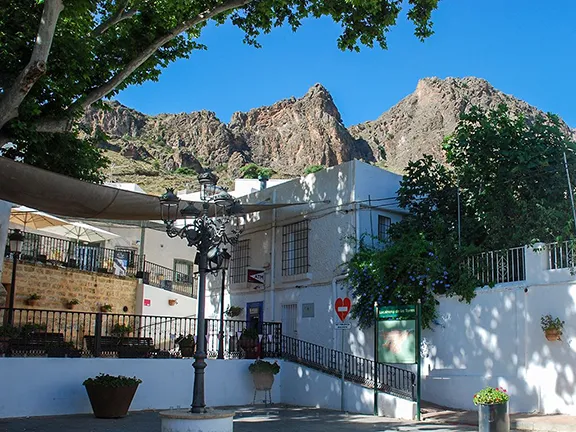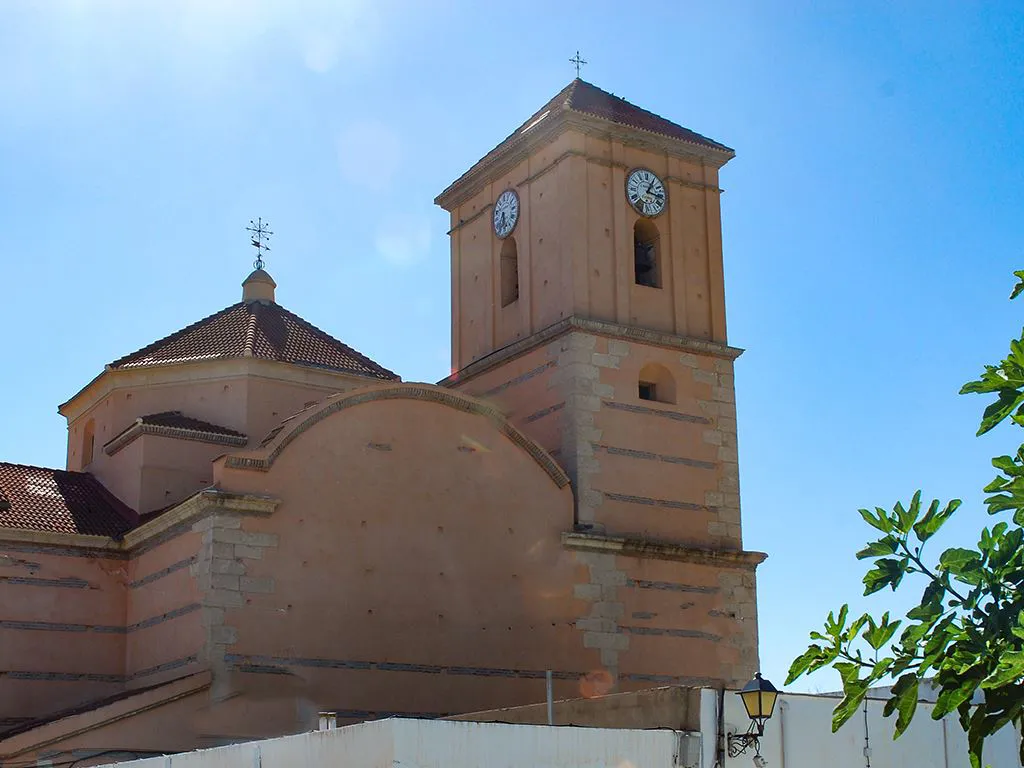On the northern edge of the Sierra Alhamilla Paraje Natural, Nature Site, in Almeria province, is the tiny white village of Lucainena de las Torres, nominated as one of the prettiest villages in Spain.
By Nick Nutter | Updated 21 Sep 2022 | Almería | Villages |
Login to add to YOUR Favourites or Read Later


Lucainena de las Torres
It is thought that Lucainena de las Torres was named after a Roman aristocrat who built a villa in the vicinity. The de las Torres is a later addition and refers to the torre that helped defend the town, easily spotted on a hill just to the north east. According to Pascual Madoz, a 19th century geographer, this was just one of seven torres that guarded the essential trading route between the coast and inland Almeria.


Calle Posadas Lucainena de las Torres
During the al-Andalus period, the small Muslim population cultivated grapes and they remained after the reconquest of the Emirate of Granada in 1492. The unfortunate villagers, a good 35 kilometres from the coast, found themselves attacked by pirates led by Omar- Al Askenn, he and his men sacked the village in 1566. Two years later, the War of the Alpujarras between 1568 and 1570 devastated the whole area and at its end, the entire Muslim population of Lucainena de las Torres was evicted and replaced by 19 settlers from outside Andalucia.


Sierra Alhamilla Lucainena de las Torres
The population remained small until the 19th century when the mining boom occurred. The Sierra Alhamilla was a source of high quality iron ore. Lucainena de las Torres even boasted its own kilns from which the partially treated ore was transported by a 36 kilometre long narrow gauge railway to the tiny seaside village of Aqua Amarga in the Cabo de Gata. The railway was built between 1894 and 1896 and from then until it closed in 1941 provided an essential link to the coast. It is said that the locals used the wagons to transport themselves to the coast for days out at Aqua Amarga.


Lucainena de las Torres
The small village is a pleasure to wander around. Narrow streets with white washed houses lead to the parish church, Iglesia de Nuestra Señora de Montesión and a mirador, Mirador del Poyo de la Cruz from which there are panoramic views north over the valley. Immediately behind the town, the bare rock of the Sierra Alhamilla provides a dramatic backdrop to the south. The Sierra is glimpsed up side streets as you make your way to the social centre of the village, the picturesque square on Calle Posadas with the Ayuntamiento on one side. There are a few bar restaurants just off the square.


Iglesia de Nuestra Señora de Montesión
The church reflects the history of the town. Originally a mosque, a Christian church was built on the site in 1505. Following the War of the Alpujarras the new church was abandoned and fell into disrepair. It was not until the 17th century that the church you see today was built.


Kilns atLucainena de las Torres
A kilometre or so west of the town, and clearly signposted, are the Hornos de Calcinación, eight kilns in which the iron ore was roasted with charcoal in the first stage of the processing treatment. One of the kilns was renovated in 2006 and information boards were erected to explain the various structures.
Beneath the kilns, the narrow-gauge railway wagons were filled with the treated ore. The terminus of the railway line is also the start of a Via Verde that takes you along about 6 kilometres of the railway line as it makes its way towards Aqua Amarga. There is also a pleasant, short walk that takes you to the renovated public laundry high on the hill above the village. The laundry walk takes you through a tunnel down which the ore from the mountains was carried to the kilns. You are surrounded by the stone pillars of the aerial cableways that ran down the hillsides.